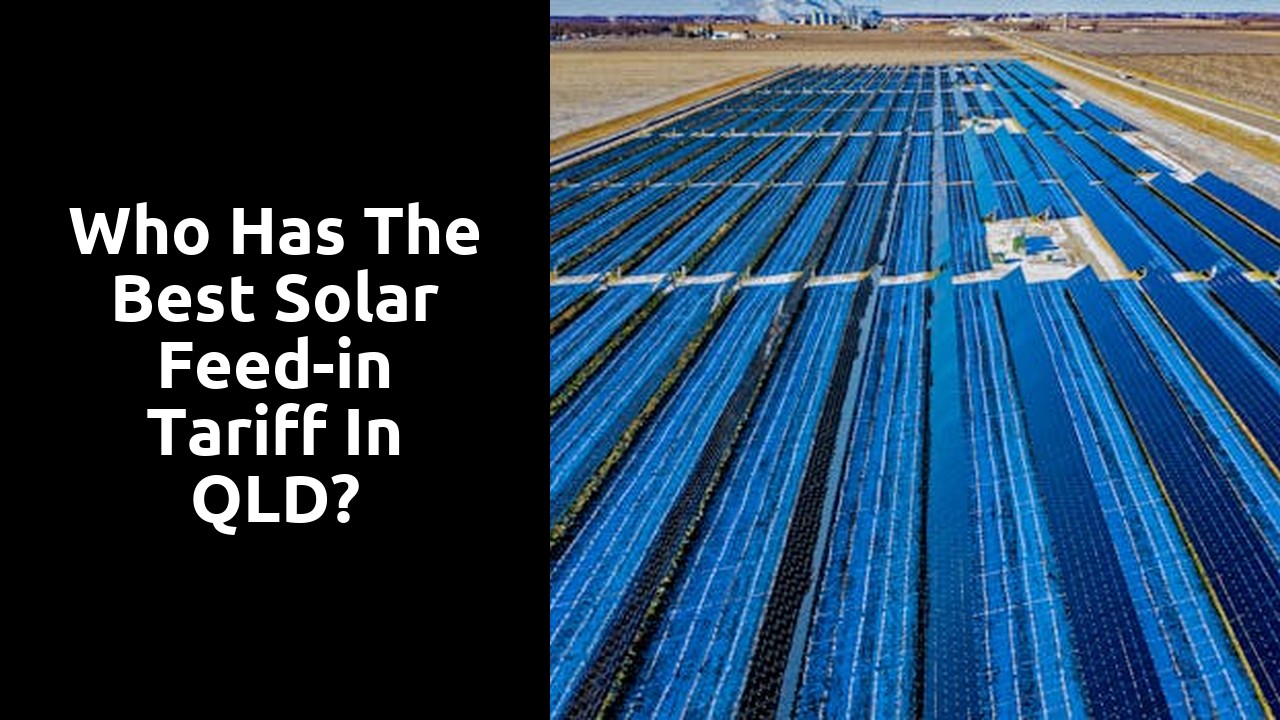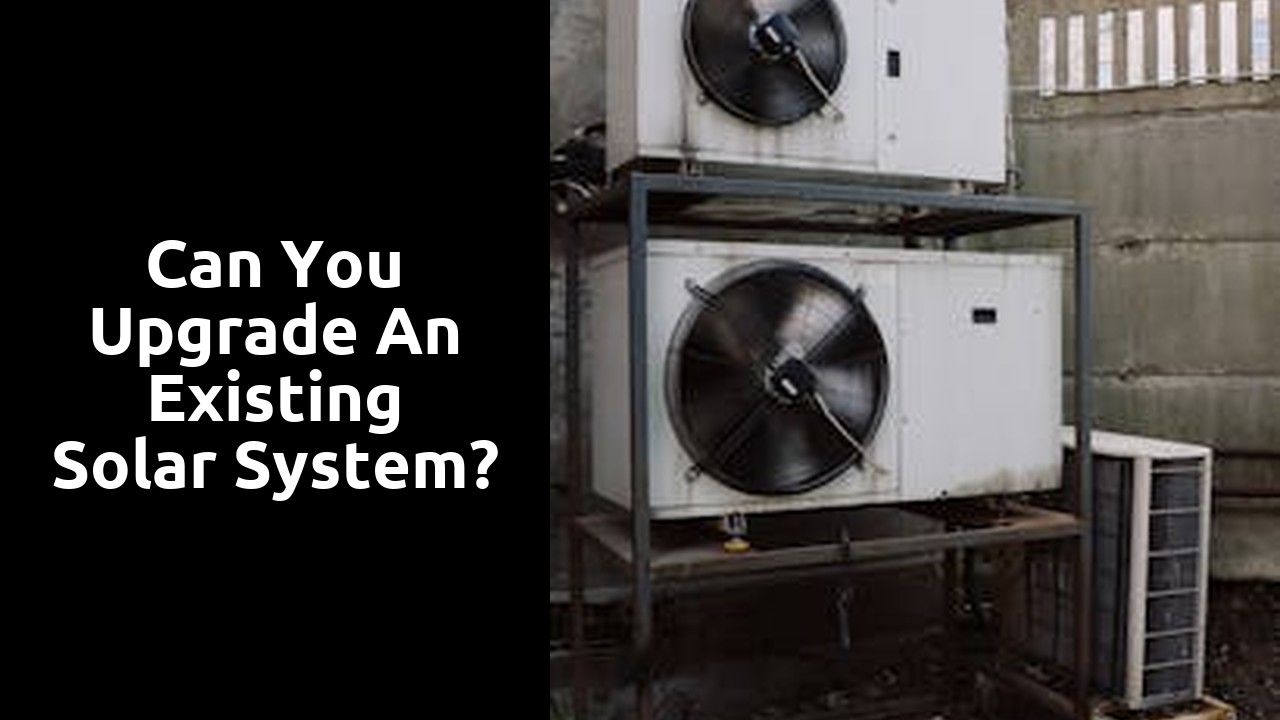
Understanding the Longterm Benefits of a Competitive Feedin Tariff
Solar feed-in tariffs play a critical role in the uptake of renewable energy sources, particularly solar power, across Queensland. With a competitive feed-in tariff in place, households and businesses are encouraged to generate their own electricity through solar panel systems and contribute excess energy back to the grid. This not only reduces reliance on fossil fuels but also promotes a more sustainable energy landscape for the future. Additionally, competitive feed-in tariffs stimulate investment in innovative technologies, leading to further advancements in the efficiency and affordability of Solar Panel System Upgrades, making them more accessible to a wider range of consumers.
Environmental Impact and Sustainability Factors
Solar feed-in tariffs play a pivotal role in driving sustainable practices within the energy sector in Queensland. By incentivising residents and businesses to generate their electricity through solar panel installations, these initiatives contribute significantly to reducing greenhouse gas emissions and decreasing reliance on traditional fossil fuel-based power sources. The promotion of renewable energy sources through competitive feed-in tariffs not only fosters a cleaner environment but also paves the way for a more sustainable energy future.
In addition to the environmental benefits, the increased adoption of solar energy systems due to attractive feed-in tariffs also leads to advancements in technology and innovation. These initiatives encourage research and development in the solar industry, fostering the evolution of more efficient and cost-effective solar panel systems. As a result, there is a growing trend towards solar panel system upgrades, with improved performance and longevity, further enhancing the overall sustainability and longevity of solar power generation in Queensland.
How Solar Feedin Tariffs Contribute to Energy Market Dynamics
Solar feed-in tariffs play a significant role in shaping the energy market dynamics in Queensland. By offering incentives for solar energy production, these tariffs encourage more households and businesses to invest in renewable energy solutions, such as solar panel systems. This increased uptake of solar energy not only reduces reliance on traditional fossil fuels but also contributes to a more diversified and sustainable energy mix within the state.
Moreover, the integration of solar feed-in tariffs into the energy market dynamics stimulates innovation and growth in the renewable energy sector. As more consumers opt for solar panel system upgrades to take advantage of higher feed-in tariffs, there is a corresponding increase in demand for solar technologies and services. This trend not only boosts local economies but also drives competition and pushes for continuous advancements in solar energy efficiency and affordability.
Influence on Electricity Supply and Demand Trends
Solar feed-in tariffs play a crucial role in shaping electricity supply and demand trends in Queensland. By incentivising the production of renewable energy, such as solar power, these tariffs encourage more households and businesses to invest in solar panel systems. As a result, there is an increase in the overall supply of electricity from solar sources, which helps to reduce the reliance on fossil fuels and decrease carbon emissions.
As more consumers adopt solar panel systems and benefit from feed-in tariffs, the peak demand for traditional energy sources during daylight hours can be mitigated. This can lead to a more balanced distribution of electricity usage throughout the day and reduce the strain on the grid during peak times. Additionally, with advancements in technology and increasing government support for solar panel system upgrades, the integration of renewable energy sources into the grid is becoming more seamless and efficient.
Evaluating the Viability of Investing in Solar Energy Systems
As more Australians seek sustainable energy solutions, investing in solar energy systems has become increasingly popular. Solar panel system upgrades offer homeowners and business owners the opportunity to reduce their electricity bills while also decreasing their carbon footprint. Evaluating the viability of investing in solar energy systems involves considering the initial cost of installation, the potential long-term savings on electricity bills, and the environmental benefits of using renewable energy sources.
Besides the financial advantages, solar panel system upgrades can also increase the value of properties. With the growing awareness of climate change and the shift towards sustainable living, properties equipped with solar energy systems are appealing to environmentally-conscious buyers. By conducting a cost-benefit analysis for residential and commercial properties, individuals can assess whether investing in solar energy systems is a wise decision for the future.
CostBenefit Analysis for Residential and Commercial Properties
When it comes to evaluating the cost-benefit analysis for investing in solar energy systems in Queensland, homeowners and businesses must consider various factors. The potential savings in electricity bills over the long term, along with the increasing efficiency and affordability of solar panel system upgrades, make them a compelling option for many. With the rise in electricity prices and the push towards sustainable energy solutions, investing in solar power can lead to substantial financial benefits in the form of reduced energy costs and potential feed-in tariff incentives.
For both residential and commercial properties, the decision to invest in solar energy systems should also take into account the environmental benefits they offer. By reducing reliance on non-renewable energy sources, such as coal-fired power plants, solar power contributes to a lower carbon footprint and helps in the transition towards a cleaner and more sustainable energy future. Additionally, the improved reputation of businesses that demonstrate commitment to environmental sustainability can also be a significant advantage in attracting environmentally-conscious customers and stakeholders.
FAQS
What is a solar feed-in tariff?
A solar feed-in tariff is a payment made to solar panel owners for the excess electricity they generate and feed back into the grid. ##
Why is it important to consider the solar feed-in tariff when investing in solar energy systems in QLD?
The feed-in tariff determines how much money you can earn by selling excess electricity back to the grid, making it a key factor in the financial viability of solar investments. ##
Who offers the best solar feed-in tariff in QLD?
The best solar feed-in tariff in QLD may vary depending on the electricity retailer. It's recommended to compare and research different retailers to find the most competitive offer. ##
How does the solar feed-in tariff impact the environment and sustainability?
By incentivizing the production of renewable energy, a competitive feed-in tariff can encourage more households to invest in solar energy, contributing to reduced greenhouse gas emissions and a cleaner environment. ##
Can the solar feed-in tariff influence electricity supply and demand trends in QLD?
Yes, a higher feed-in tariff can lead to increased solar energy generation and supply to the grid, potentially impacting electricity demand and market dynamics in the long run. ##
How can I determine if investing in a solar energy system with a feed-in tariff is viable for my property?
Conducting a cost-benefit analysis considering factors such as upfront costs, potential savings on electricity bills, and the feed-in tariff rate can help you evaluate the viability of investing in solar energy systems for your property. Remember to consult with a qualified professional or energy provider for personalized advice on solar feed-in tariffs and investments in solar energy systems.
